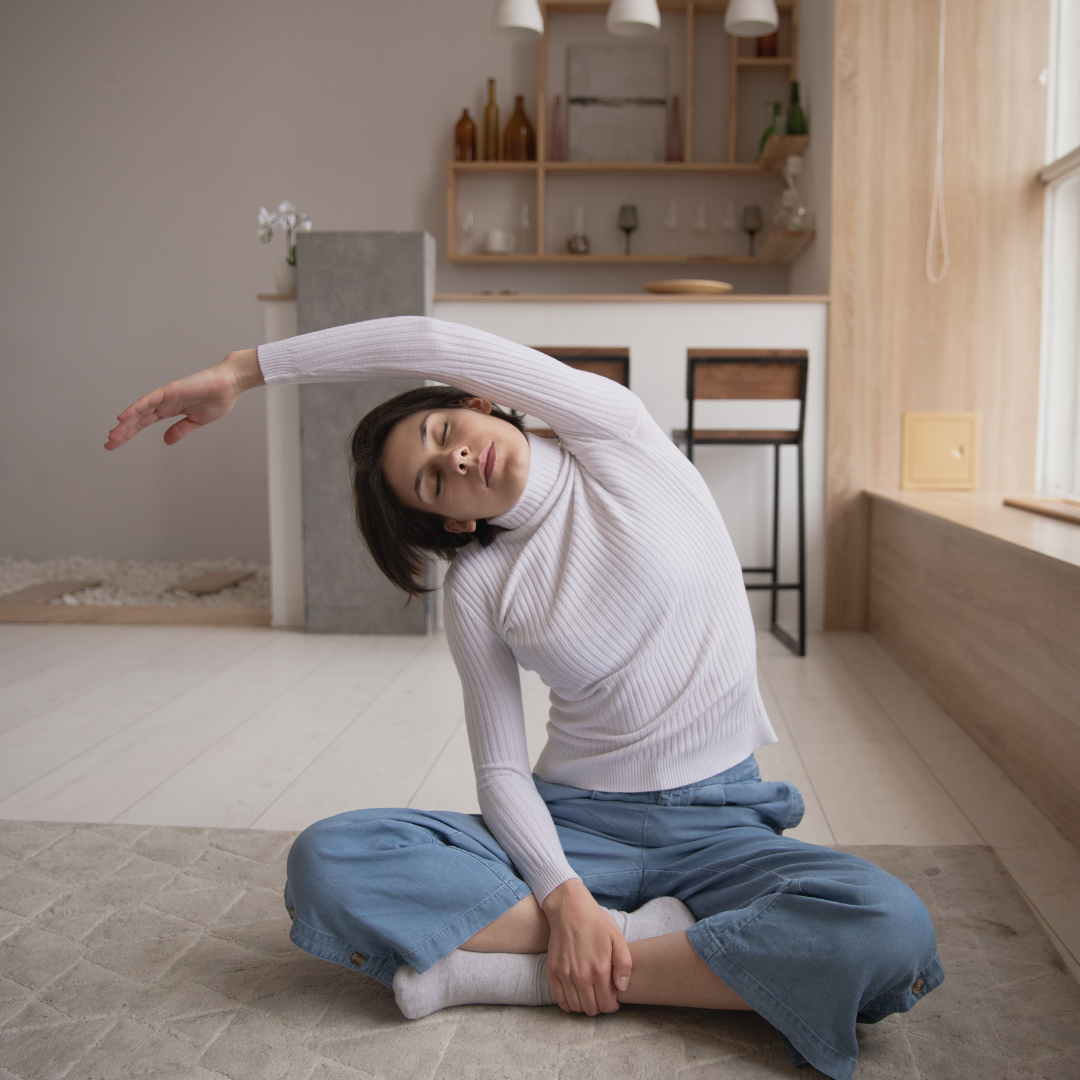Incorporating simple daily stretches into a routine can significantly enhance flexibility and overall movement. Regular stretching improves range of motion, reduces muscle tension, and can prevent injuries. Many people overlook the importance of stretching, thinking it only benefits athletes or those engaged in rigorous exercise.
Stretching is accessible to everyone and can be easily integrated into daily life. Just a few minutes each day can lead to noticeable improvements in how the body feels and performs. This practice not only supports physical health but also contributes to mental well-being by promoting relaxation and relieving stress.
By committing to a set of straightforward stretches, individuals can unlock the benefits of improved flexibility, allowing for greater ease in everyday activities. Simple adjustments in one’s routine can pave the way for long-lasting changes in mobility and comfort.
Understanding Flexibility and Daily Stretching
Flexibility plays a crucial role in physical activity and overall fitness. Daily stretching can significantly enhance range of motion, improve balance, and contribute to overall muscle health. This section explores the benefits of flexibility, various stretching techniques, and the key muscle groups involved.
Benefits of Improving Flexibility
Improving flexibility offers several benefits that can enhance daily life and physical performance. Increased flexibility can lead to better posture, reducing strain on muscles and joints. It also helps prevent injuries by allowing joints to move through their full range of motion.
Additional advantages include:
- Enhanced athletic performance due to better movement patterns.
- Improved circulation and blood flow to the muscles.
- Increased relaxation and reduced stiffness contribute to overall well-being.
Incorporating daily flexibility exercises can yield long-term results, making it easier to perform everyday activities and engage in more intense physical activities.
Types of Stretching Techniques
Different stretching techniques cater to various needs and preferences. The most common methods include:
- Static Stretching: Involves holding a stretch for a specified duration. It is effective for improving flexibility after physical activity.
- Dynamic Stretching: Focuses on moving parts of the body through a full range of motion. It prepares muscles for upcoming activity and enhances performance.
- Ballistic Stretching: Utilizes momentum to achieve a stretch. While effective, it requires caution to avoid injury.
- Proprioceptive Neuromuscular Facilitation (PNF): Combines stretching and contracting of the muscles. It is commonly used in rehabilitation settings to enhance flexibility.
Choosing the right technique depends on individual goals and fitness levels.
Key Muscle Groups for Flexibility
Several muscle groups benefit significantly from stretching. Key areas include:
- Hamstrings: Essential for proper movement and mobility. Tight hamstrings can lead to lower back pain.
- Quadriceps: Important for leg strength and stability. Stretching these muscles helps improve overall leg mobility.
- Hip Flexors: Critical for activities involving bending and lifting. Tight hip flexors can affect posture and balance.
- Shoulders and Back: Stretching these muscles aids in maintaining a healthy posture and reducing tension.
Regular attention to these muscle groups through targeted stretching can enhance flexibility and support overall physical activity.
Essential Daily Stretches to Improve Flexibility
Incorporating essential stretches into a daily routine can significantly enhance flexibility and mobility. Focused stretching exercises target key muscle groups, which aids in overall performance and reduces the risk of injuries.
Hamstring Stretch
Tight hamstrings can limit mobility and contribute to back pain. To perform a hamstring stretch, sit on the floor with one leg extended and the other bent with the foot against the inner thigh. Reach towards the toes of the extended leg while keeping the back straight. Hold this position for 15-30 seconds, feeling the stretch along the back of the leg. Switch sides and repeat. This stretch not only improves flexibility but also promotes better posture by alleviating tension in the lower back.
Quadriceps Stretch
The quadriceps are vital for various movements, including walking and running. To stretch the quadriceps, stand on one leg and bring the opposite heel towards the glutes. Use one hand to grasp the ankle, pulling it gently for a deeper stretch. Keep the knees close together and maintain a straight posture. Hold for 15-30 seconds, then switch legs. This exercise can help prevent tightness in the front of the thigh and support knee health, crucial for athletic activities.
Hip Flexor and Hip Stretch
Hip flexors often become tight from prolonged sitting, impacting overall flexibility. To stretch these muscles, lunge forward with one leg, ensuring the knee is directly over the ankle. Keep the back leg straight and gently push the hips forward to feel the stretch in the hip flexor. Hold for 15-30 seconds and switch sides. For a deeper hip stretch, sit cross-legged or in a butterfly position, leaning forward gently. Incorporating this stretch into the routine reduces hip tightness and enhances lower body mobility.
Shoulder and Upper Body Stretch
Shoulder tension can hinder upper body flexibility and movement. To stretch the shoulders, extend one arm across the body and use the opposite hand to pull it closer. Hold for 15-30 seconds, feeling the stretch across the shoulder and upper back. Additionally, clasp both hands behind the back and straighten the arms, opening the chest. This position encourages better posture and flexibility in the shoulders. Including these stretches promotes fluidity in upper body movements and can relieve tension caused by daily activities.
Building an Effective Stretching Routine
Creating a stretching routine can significantly enhance flexibility and overall mobility. It is essential to understand the different types of stretching and how they can be integrated effectively into various fitness levels.
Incorporating Static and Dynamic Stretching
A balanced stretching routine includes both static and dynamic stretching. Static stretching involves holding a stretch for a set period, targeting muscle groups directly. This type is effective post-workout to promote relaxation and recovery.
Dynamic stretching, on the other hand, involves controlled movements that help warm up the muscles. It improves range of motion and prepares the body for physical activity. Examples include leg swings and arm circles. Incorporating both types ensures a comprehensive approach to flexibility.
Stretching Routine for Different Fitness Levels
Tailoring a stretching routine to individual fitness levels is crucial. Beginners can start with basic static stretches like toe touches and quadriceps pulls. These stretches build foundational flexibility without overwhelming the body.
Intermediate individuals may incorporate a mix of dynamic stretches and active stretching. This could include lunges with a torso twist or high knees, enabling greater range and flexibility. Advanced routines might combine complex movements, focusing on specific muscle groups through resistance exercises to maintain and enhance flexibility.
Tips for Safe and Lasting Results
Prioritizing safety in a stretching routine is vital. Start with a proper warm-up to prepare the body. This can include light aerobic activity, like brisk walking or jogging, for 5–10 minutes.
Focus on gradual progression. Hold static stretches for 15–30 seconds without bouncing. Maintain a good form to avoid injury. Consistency is key; stretching routines should be practiced 3-5 times a week for effective results. Listening to the body’s signals ensures lasting improvements while minimizing the risk of strain or injury.
Maximizing Flexibility Gains and Preventing Injuries
To enhance flexibility while minimizing injury risks, several key practices can be implemented. Attention to warm-ups, the use of tools such as foam rollers, and tailored stretching approaches for different demographics are vital for optimal results.
Role of Warm-Up and Cool-Down in Stretching
Warm-up activities boost blood flow to muscles, preparing them for stretching. Engaging in dynamic movements, like leg swings or arm circles, is effective before static stretches. This practice increases muscle temperature and elasticity, making stretches more beneficial.
Cool-down routines are equally essential. Gradually reducing activity levels helps normalize heart rates and aids in recovery. Static stretches following exercise can facilitate muscle repair and enhance overall flexibility.
Using Tools like a Foam Roller
Foam rollers assist in self-myofascial release, helping to alleviate muscle tightness and improve flexibility. By applying pressure to specific muscle groups, users can enhance blood circulation and loosen muscle knots.
Incorporating foam rolling into a routine can lead to better flexibility outcomes. It is particularly advantageous before and after stretching or physical activity. Consistent use promotes quicker recovery and decreases the risk of muscle injuries.
Stretching Recommendations for Older Adults
For older adults, flexibility is crucial for maintaining mobility and reducing injury risk. Gentle static stretches hold potential, focusing on major muscle groups such as hamstrings, quadriceps, and shoulders.
Sessions should be conducted 2-3 times per week. Each stretch should be held for 15-30 seconds, ensuring comfort without straining. Incorporating balance exercises can further enhance physical stability and support overall flexibility.
Flexibility for Dance, Yoga, and Physical Therapy
Certain activities like dance and yoga require specific flexibility elements. These practices emphasize fluid motion and extended range of motion, contributing to improved performance and injury prevention.
For individuals in physical therapy, tailored stretching routines are essential for rehabilitation. They should focus on flexibility to restore movement patterns and strengthen affected areas. Incorporating both static and dynamic stretches helps achieve the desired flexibility goals in these disciplines.


